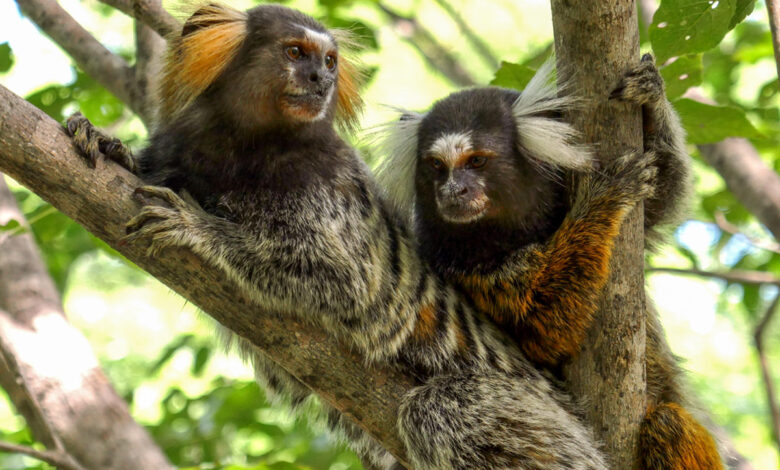
Marmosets (marmosets) are small and lovely monkeys native to South America that have many and interesting social abilities. These small apes are full of wonder and live in complex social structures in treetop habitats.
According to ScienceAlert, the findings of a new study show that members of marmoset social groups even call each other by name; A behavior previously only recorded in three highly intelligent species, including elephants, dolphins and humans. However, parrots also produce unique vocal signals to identify themselves.
The authors of the study report that marmosets use special sounds called “phi sounds” to identify and communicate with each other.
Given that few known wild animals have such a naming system, the discovery of phi sounds in the marmoset community is not trivial; But it’s interesting to find it in a primate, because until now we were the only primates that recognized each other by name. Of all the primates, the ability to recognize by name was discovered in the most distantly related apes, not the most closely related member of the human family.
In addition to drawing attention to marmosets, the new findings may help us better understand the origins of language in our ancestors, the researchers say. To uncover the marmosets’ secrets, the authors recorded natural conversations between pairs of primates who could not see each other but could hear each other’s voices, as well as between a marmoset and a computer.
Discovering the ability to call each other by name in one of the primates is very interesting
The researchers were particularly interested in phi sounds and wanted to see if they had a function beyond maintaining communication. The researchers also wondered whether phi sounds might serve other, as yet undiscovered, purposes in communication between marmots.
The researchers note that marmosets use vocalizations to create turn-based dialogues, and calls can reportedly be coded with details about who is making them.
Given the distinctive characteristics and flexibility of phi sounds, the researchers hypothesized that when marmots use these calls to talk to each other, they may be using them to “name” or identify each other; This means that marmots have a way of learning and using these names in their social groups.
Led by a team of researchers David Omera brain science researcher found that marmots actually use distinctive phi sounds to name each other. The monkeys also accurately understood and responded to phi sounds made directly at them.
“This discovery highlights the complexity of social communication among marmosets,” says Omer. “These calls are not just used to locate themselves as previously thought, marmosets use these special sounds to nickname and address specific individuals.”
The findings of the study showed that the members of the group use special phonetic nicknames to address each person and continuously use certain phonetic features to encode specific names. All of this seems to reflect aspects of human speech, including the use of phonetic epithets as names and the existence of local dialects.
It is likely that the names of all individuals become common knowledge in a group of marmots through social learning, which does not occur only among closely related young monkeys. Even unrelated adult marmosets may learn name and pronunciation details from each other, suggesting that adult monkeys learn both names and accents from other group members in the wild.

David Omer’s Lab
The researchers note that marmosets live in the dense forest canopies of rainforests across South America, where calling nicknames for individual group members may have an adaptive advantage. Visibility among dense trees is limited, but the use of vocal nicknames as names may help monkeys maintain social bonds and group cohesion when they spend a significant amount of time out of sight.
The naming behavior of marmosets may point to how social communication and language developed in some of our prehuman ancestors. “Marmosets live in small monogamous family groups and care for their young together like humans do,” Omer says. “These similarities suggest that they faced evolutionary social challenges comparable to our pre-linguistic ancestors, which may have led marmosets to develop similar communication methods.”
The study was published in the journal Science.









